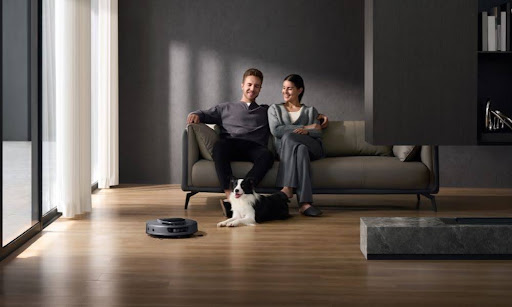With the growing adoption of smart home devices, the mop robot has become an essential cleaning tool in many households. These robots are not only convenient but also environmentally friendly, providing a sustainable solution for everyday cleaning. Unlike traditional cleaning methods, robots leverage advanced technologies to reduce water and energy consumption, minimize the use of chemical cleaning agents, and limit waste production.
In this article, we will explore how mop robots contribute to more eco-conscious living and help households maintain clean homes with a minimal environmental footprint.
The Environmental Benefits of Mop Robots
Traditional cleaning methods often require significant amounts of water and cleaning agents, both of which have environmental impacts. Mop robots, however, are designed to optimize water usage and reduce the need for chemical-based cleaners. Many modern models are equipped with water recycling systems that allow the robot to clean more efficiently with less water.
By using only the amount of water required for cleaning, mop robots can significantly reduce water waste compared to conventional mopping. Many models are also equipped with washable, reusable cleaning pads, which help reduce the need for disposable materials such as paper towels or wipes. This further minimizes waste and plastic use.
Reducing Water Waste
Water conservation is a major concern in today’s world, and traditional mopping methods can contribute to considerable water waste. Mop robots address this issue by using water more efficiently. Many robot mops use an intelligent water control system that precisely dispenses the right amount of water for each cleaning task.
As a result, they are able to clean effectively while minimizing water consumption. Some advanced models feature a water filtration system, allowing them to reuse dirty water for subsequent cleaning tasks. This innovative technology reduces the need for frequent water changes, helping conserve water and reduce waste.
Energy Efficiency and Low Carbon Footprint
In addition to water conservation, mop robots are also designed to be energy-efficient. Unlike traditional cleaning methods, which may require a vacuum cleaner or manual scrubbing, mop robots optimize their energy use through smart navigation and route planning.
By mapping out the most efficient cleaning paths, they ensure that energy is not wasted on redundant movements. Moreover, many robots are powered by rechargeable batteries, which can be charged using low-energy power sources, further minimizing their carbon footprint.
For households looking to reduce their environmental impact, investing in an energy-efficient vacuum robot or mop robot can be an effective way to lower household energy consumption and reduce overall carbon emissions.
Sustainable Design and Materials
The design of mop robots also contributes to their environmental benefits. Many brands are focusing on sustainability by using eco-friendly materials in the construction of their robots. From recyclable plastics to energy-efficient motors, these robots are built with an emphasis on durability and minimal environmental impact.
Additionally, the longevity of mop robots plays a key role in their sustainability. Unlike single-use products, robot mops are designed to last for several years, reducing the frequency of replacements and minimizing electronic waste. By providing long-term performance and durability, mop robots help reduce the overall consumption of materials and resources.
Automatic Cleaning and Longevity
One of the key features of mop robots is their ability to clean and maintain themselves with minimal human intervention. Many robots come with self-cleaning and self-drying functions that help extend the lifespan of the cleaning pads and ensure consistent performance.
This reduces the need for frequent replacement of cleaning components, further cutting down on waste. By automating the cleaning process and reducing the need for manual intervention, mop robots not only save time but also minimize the environmental impact associated with constant cleaning product purchases and disposables.
The Contribution of Mop Robots to Modern Homes
As sustainability becomes increasingly important to consumers, the demand for eco-friendly cleaning solutions is growing. Robots provide an excellent solution for environmentally-conscious households, offering a cleaner, greener alternative to traditional cleaning methods.
With features that promote water and energy efficiency, waste reduction, and long-term durability, these robots are helping modern families maintain clean homes while lowering their environmental footprint. In addition to these practical benefits, they align with the broader trend toward smart home technology. As homes become more connected and automated, robots like these offer an effortless way to contribute to a sustainable future.
Conclusion
Mop robots are changing the way we clean, offering an environmentally friendly solution that minimizes water and energy consumption while reducing waste. By combining smart navigation, water filtration, and sustainable design, these robots provide an efficient and eco-conscious way to keep homes clean.
As technology continues to evolve, we can expect even more innovations that will enhance the sustainability and performance of robots, making them an essential tool in any eco-friendly home.






